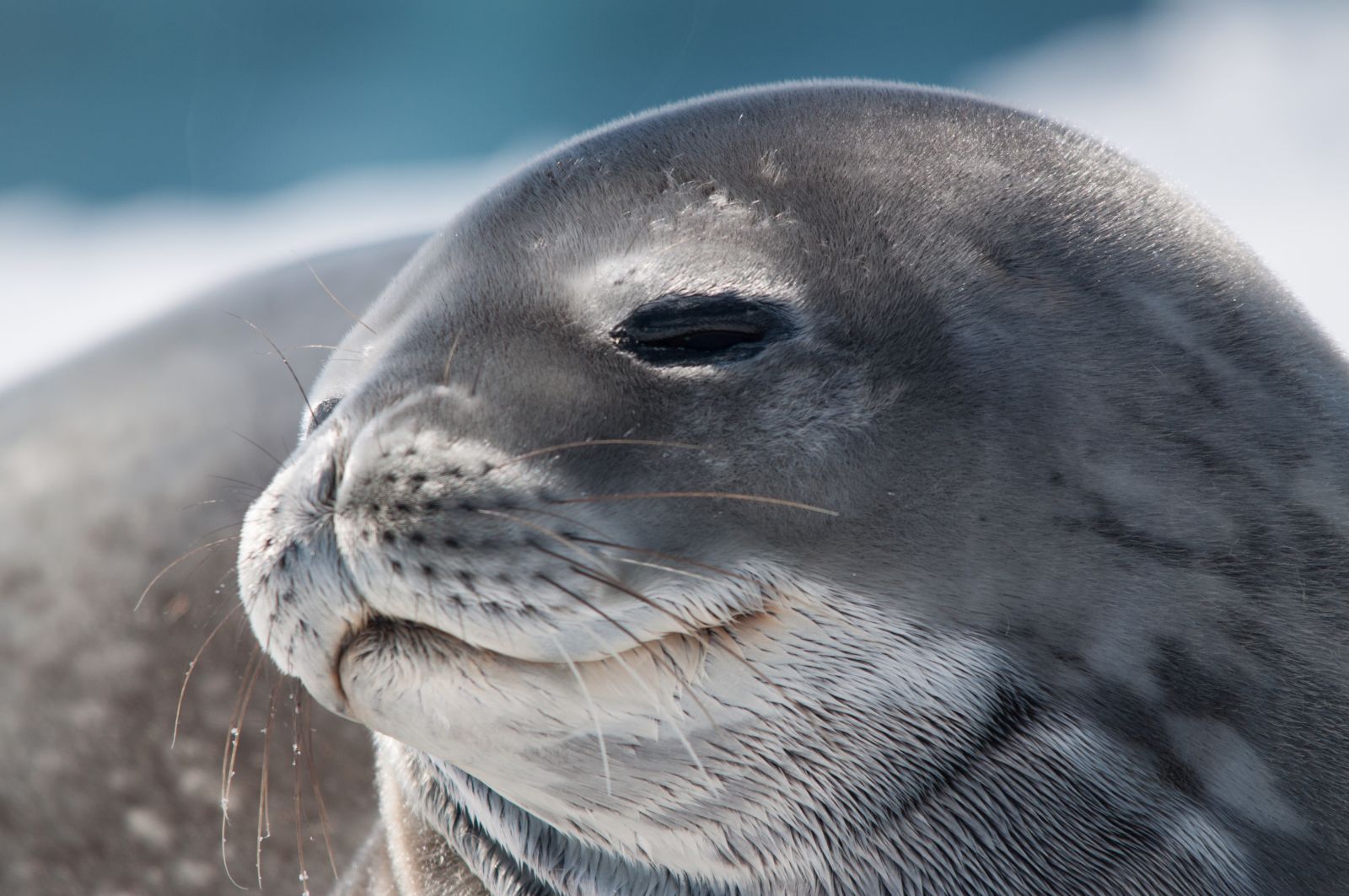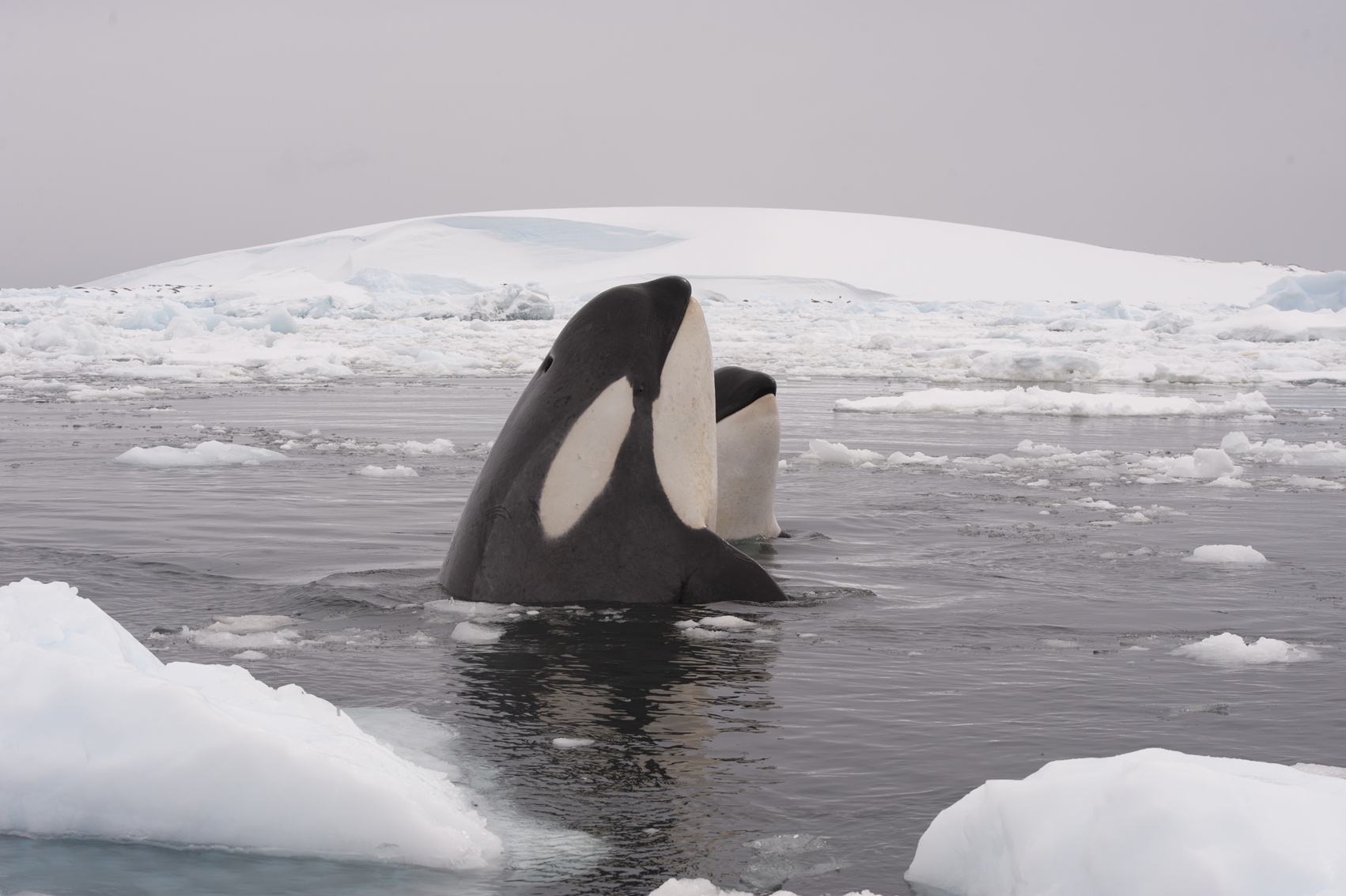Despite its barren and deeply inhospitable landscape, Antarctica is home to an extraordinary array of wildlife. Certain species thrive in the region’s sub-zero temperatures, nesting between soaring glaciers, vast icebergs and in the icy waters - and up-close encounters are what makes a visit to Antarctica so special. All expedition ships are equipped with a fleet of zodiacs and daily excursions led by expert naturalists are a real highlight, as guests are taken into the remotest corners of the ice for the opportunity to spot a thrilling array of wildlife in its natural habitat. Read on to discover what you’re most likely to see on a trip to Antarctica…
WILDLIFE IN ANTARCTICA

Penguins
Penguins are the most common species of bird found in Antarctica – and according to the British Antarctic Survey, some live in colonies large enough to rival the populations of a number of the world’s cities. You’re most likely to spot penguins belonging to the Brush-Tailed family: Adélies, Chinstraps and Gentoos. These adorable creatures bounce and slide along the ice, waddle back and forth along penguin highways and deliver fish into the mouths of their young. They’re not afraid of humans, and often swim alongside zodiac ships – so the chances are you’ll be able to get fairly close.
King penguins are distinguished by the golden feathers on their head and neck. They prefer the warmer waters lapping the sub-Antarctic islands like Macquarie and South Georgia and are often found here in huge colonies.
Albatross
The Wandering Albatross has the largest wingspan of any bird in the world, allowing it to fly up to 100km in a day. These majestic birds are known to follow the tailwinds of a ship, so you’re guaranteed regular sightings of them gliding through the air and dipping and diving over the water from the comfort of your ship’s deck. Albatrosses are rarely seen on land, gathering only to breed – and they hold a special place in maritime superstition too. Sailors once believed that anyone lost at sea was reincarnated as an albatross, and even today they’re still considered a lucky charm.
Seals
Seals may look harmless – but they’re actually one of Antarctica’s most aggressive predators. The Elephant Seal - so called because of its trunk-like nose, is the largest species, and despite spending most of winter out at sea, they’re very easy to spot in the summer when they venture onto the South Georgian beaches for the mating season. Fur seals are just as common and the Antarctic ice is almost always overrun with the fluffy mammals and their tiny pups. Despite being highly inquisitive, they’re fiercely protective of their young – so it’s a good idea to maintain a safe distance.
Whales
Humpback whales are a common sighting in the Antarctic waters – these 40-ton beasts are known to swim very close to the ships, moving slowly through the shallower sea. There’s a good chance of seeing one popping its head up to breach and slap the swell with its enormous flippers – and if you’re very lucky, you might spot a mother with its calf in tow; a particularly special sight as they slice through the icy waters side by side.
ANTARCTICA WILDLIFE HIDDEN GEMS

Killer Whales
With their distinctive black and white markings, over two-thirds of the world’s killer whales live in Antarctica – yet they tend to stay in deep open waters. These ruthless hunters travel in pods, working together to bring down their prey. They hunt all other smaller species of whale and catching sight of them mid-chase is the ultimate prize - they certainly love to put on a show!
Leopard Seals
Known for their black spotted coats, these aggressive mammals hunt fish, seabirds and even penguins with their razor-like teeth. They’re known to linger around colonies of penguins, waiting for an opportune moment to attack. Looks can be deceiving – despite their long, streamlined bodies, leopard seals often reach weights of up to 600kg, propelling themselves through the water to reach their prey. Killer whales are leopard seals’ only predator, making them very solitary animals – they don’t need the security of travelling in a pack.
Emperor Penguins
Emperor Penguins are by far the largest and best-known species of penguin and can grow up to 115cm tall. Although they form large colonies on land (sometimes up to 10,000-strong), their sheltered breeding grounds usually lie far inland or on solitary sheets of floating ice, making them relatively difficult to reach. They breed in the depths of the winter, forming tight huddles with each other to protect themselves from the bitter winds – and often go hunting for food hundreds of miles from their colony, which is when you’re most likely to spot a straggler. For the best opportunities to see a full Emperor Penguin colony, selected departures of the Ultramarine or the Le Commandant Charcot endeavour to reach Snow Hill Island where thousands of breeding pairs can be seen. If you are visiting Antarctica on a land-based stay, extensions can also be arranged to take in a remote colony of Emperors.
Blue Whales
Growing up to 100 feet long, the Blue Whale is the largest mammal on earth – and one of the most elusive Antarctic species. These extraordinary creatures are incredibly rare and tend to swim alone in the deepest waters, feasting on a diet of shrimp-like fish called krill. Once critically endangered, numbers of blue whales are steadily recovering – but only a lucky few will be treated to a sighting.
For more information about spotting Antarctica's wildlife and planning an Antarctica Cruise, contact our Antarctica specialist on 01242 787819.


















